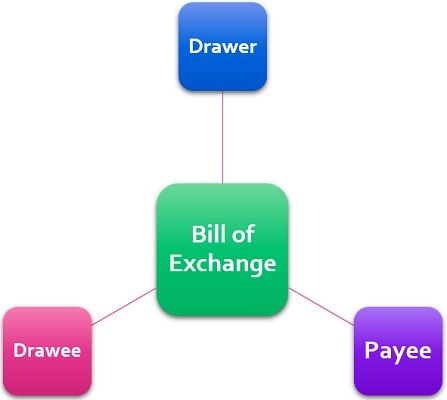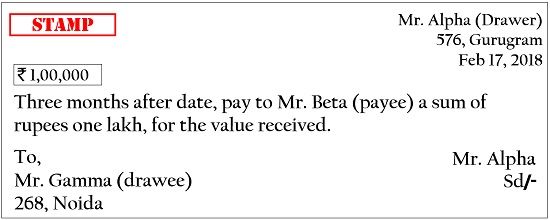Definition: Bill of Exchange, can be understood as a written negotiable instrument, that carries an unconditional order to pay a specified sum of money to a designated person or the holder of the instrument, as directed in the instrument by the maker. The bill of exchange is either payable on demand, or after a specified term.
In a business transaction, when the goods are sold on credit to the buyer, the seller can make the bill and send it to the buyer for acceptance, which contains the details such as name and address of the seller and buyer, amount of bill, maturity date, signature, and so forth.
Features of Bill of Exchange
- An instrument which a creditor draws upon his debtor.
- It carries an absolute order to pay a specified sum.
- The sum is payable to the person whose name is mentioned in the bill or to any other person, or the order of the drawer, or to the bearer of the instrument.
- It requires to be stamped, duly signed by the maker and accepted by the drawee.
- It contains the date by which the sum should be paid to the creditor.
Parties to Bill of Exchange
- Drawer: The person who makes the bill, or who gives the order to pay a certain sum of money, is the drawer of the instrument.
- Drawee: The person who accepts the bill of exchange, or who is directed to pay a certain sum, is called drawee.
- Payee: The person receiving payment is called the payee, who can be a designated person or the drawer himself.
Now, apart from the parties mentioned above, there are some other parties to a bill of exchange, described as under:
- Drawee, in case of need: If in any bill of exchange, a person’s name is mentioned in addition to the original drawee, who can be resorted for payment. Then, that person will be called as drawee.
- Holder: The holder of the bill of exchange, is the person who possesses the bill and who has the right to recover the amount from the parties.
- Acceptor: The person who accepts the bill is called acceptor. Usually, a debtor or drawee is the acceptor. However, it can be accepted by some other person also, on behalf of the debtor/drawee.
- Endorser: If the holder of the bill, endorses it to another person, then the person will be called as the endorser.
- Endorsee: The person to whom the bill of exchange is endorsed, is called as an endorsee.
Specimen of Bill of Exchange
Example
Joseph gives a loan of Rs.1,00,000 to Alex, which Alex has to return after three months. Further, Joseph has bought certain goods from Peter, on credit for Rs. 1,00,000. Now, Joseph can create a document directing Alex, to pay Rs. 1,00,000 to Peter, after three months.
The instrument will be called as Bill of Exchange, which is transferred to Peter, on whom the payment is due, for the goods purchased from him.



Siddhi says
Nice.very helpful for me
GANAPATHI says
good .useful one thanks
Seemab Sajid says
Very helpful. Thanks
PRADEEP says
Thanks
Khushi says
This is a sensible one
Khashinde says
Thanks
Mizan says
Thanks, really helpful for better understanding
Thi says
Thanks very useful for me.
Abdulrehman says
Now i understand the parties of BE thanks very much
Eric says
Helpful
Sameer saini says
Really helped a lot in easy learning
Lalitha says
Thank you
Syed says
You used the simplest language to convey the message which is undoubtedly understandable to even non-finance backgrounds.
realesson says
Great Information! I visited your website today and found it very interesting and well done.
Prashant Sudhakar Patil says
Thank you, Very much.
Victoria says
Thanks alot
Mustapha sesay says
Thanks very much for this outstanding teaching